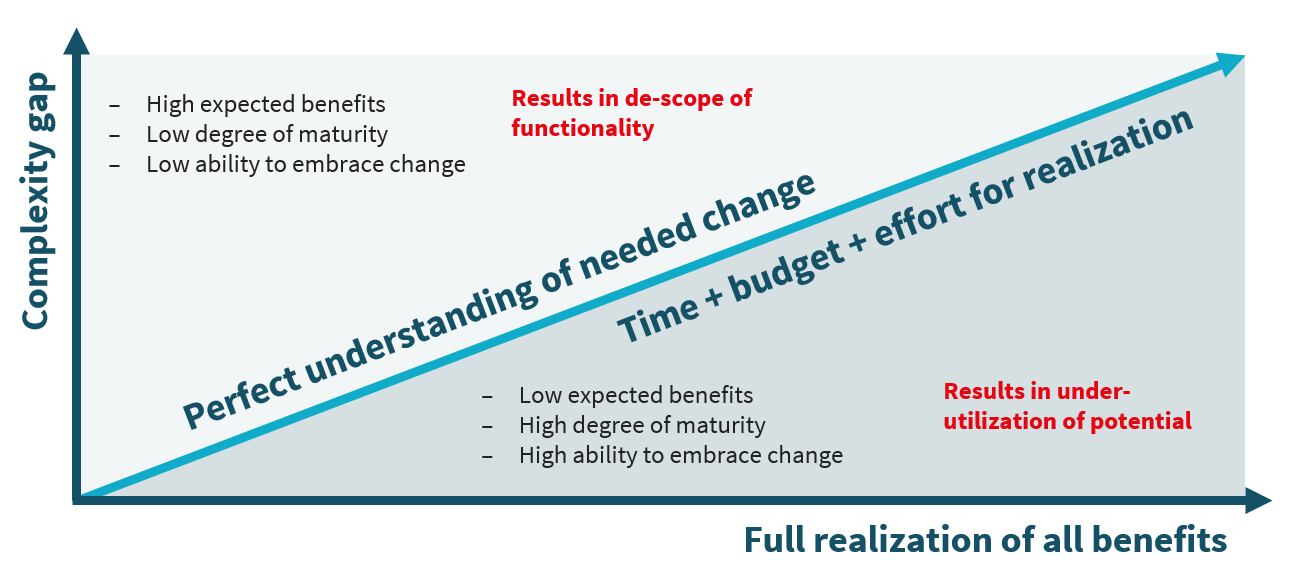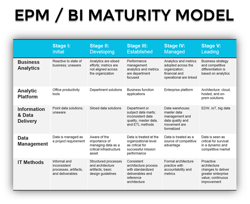Customers often ask, “What can we do to make sure our project will be a success?” Sometimes this question is so important to a client that they will go the extra mile to pay for advisory services (from, say, the Big 4 consulting firms) to help them answer the question. Well, from my experience in Big 4 and answering just this sort of question, there are three key areas that determine whether your project will be a success.
What makes a project successful? We can all agree that a successful project brings about all the expected benefits while also being on time and on budget — if every project met this goal, then all projects would be a success.
The first key to a successful project is understanding what I call the Complexity Gap. Essentially, this is the magnitude of change a project is expected to bring about coupled with a company’s ability to embrace and manage change.
Ability to Manage Change
All projects require change, and every company has a different level of ability to embrace change. Some companies are nimble and can adapt quickly to new functionality or processes. Others simply are not and require a lot more effort to embrace a change. Be it a corporate culture element or some other factor, some companies can change easily and some cannot.
Magnitude of Change
The other element of change is the magnitude of change from a functionality, or process, or people perspective — in other words, the maturity difference between the company’s current state and future state. If a company is expecting dramatic change in terms of the new technology, its people, and its processes because the current level of sophistication in each of these areas is pretty low, then that is considered a larger change.
A high Complexity Gap will be a large amount of expected change and a low ability to embrace and effectuate that change:
- High degree of expected benefits
- Low current maturity level
- Low ability to embrace change
A low Complexity Gap will be a small amount of expected change and a high ability to embrace and make changes:
- Low degree of expected benefits
- High current maturity level
- High ability to embrace change
Every project in every company lies somewhere on this Complexity Gap spectrum. Understanding your Complexity Gap up front is extremely important to a successful project.
Complexity Gap → Time & Budget
As stated in the beginning, a successful project is the full realization of all the anticipated benefits — on time and on budget. Well, if your company and implementation partner both understand the project’s unique Complexity Gap, you will understand the accurate amount of time and budget needed.
There is a direct relationship between the Complexity Gap and the time, money, and effort required to execute a successful project. The higher the Complexity Gap, the more budget and time are needed to get the company from its current state to its desired future state.
Understanding this direct relationship is the key to undertaking a successful project. You can see from this graph that when projects deviate from understanding the Complexity Gap and the resources required for full realization, the project will either result in…
- De-scope of functionality (if the organization aimed too high)
- Underutilization of benefits (if the organization aimed too low)
- More time and money required to achieve desired results (which, if you recall, is not a success)

How to Determine Your Complexity Gap
To evaluate your organization’s ability to manage change, examine the workplace culture. Are employees encouraged to share new ideas? On the list of corporate values, are continuous improvement, innovation, or agility prioritized? Do your processes and systems easily support change? How long do new initiatives typically take to get off the ground? Capacity to manage change is a subjective measure, so be realistic and consider the contexts both inside and outside your department.
When determining magnitude of change, the best place to start is the EPM / BI Maturity Model. You can use this tool to pinpoint your organization’s current maturity level across the five primary areas of analytics. By mapping where you are vs. where you want to be, you’ll see the magnitude of change required.
Download the tool and instructions to get started: EPM / BI Maturity Model.
Stay tuned for my next two blog posts on keys to a successful project. The next post will discuss how people, processes, and technology fit together, then we’ll talk about what to expect from an implementation partner and share tales from the field.







